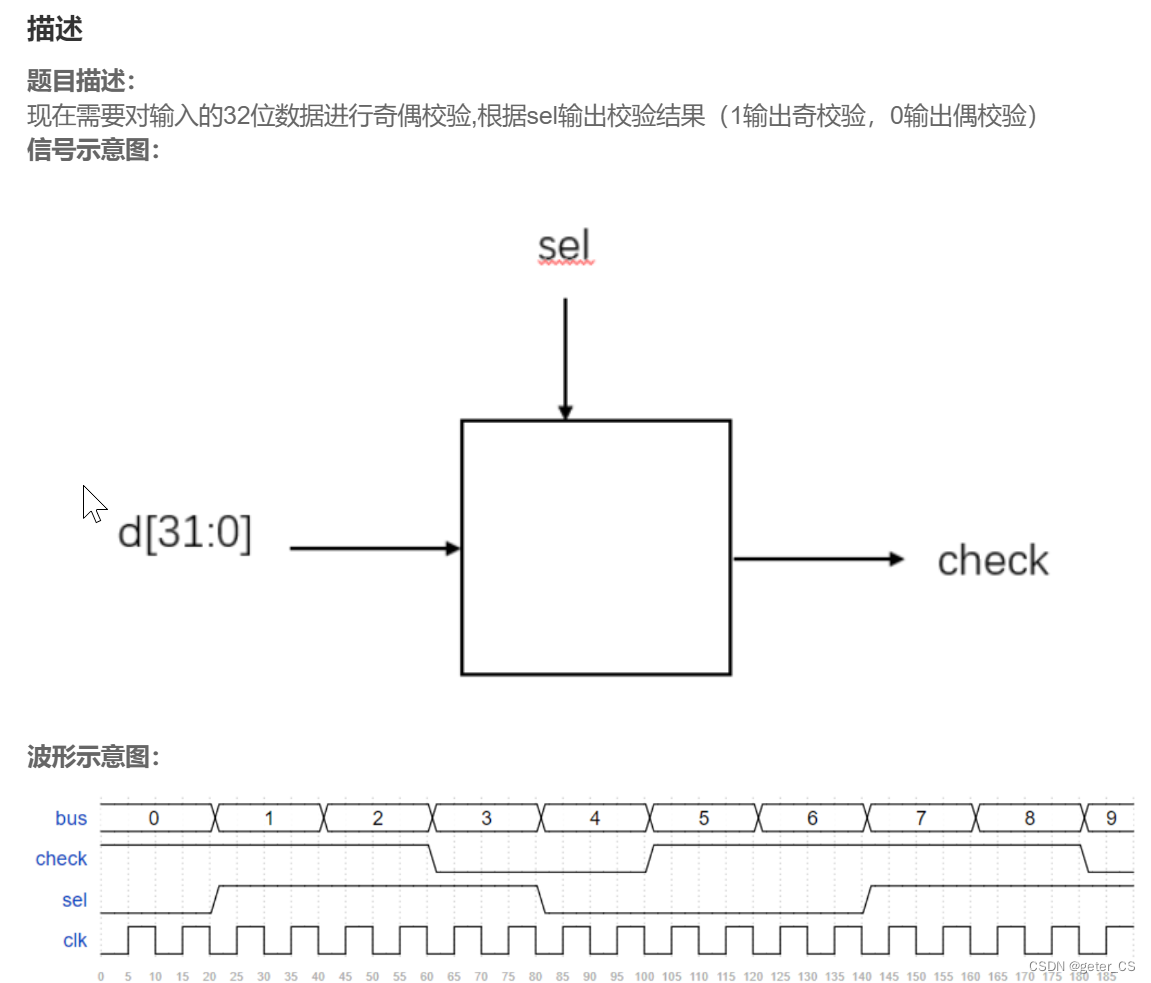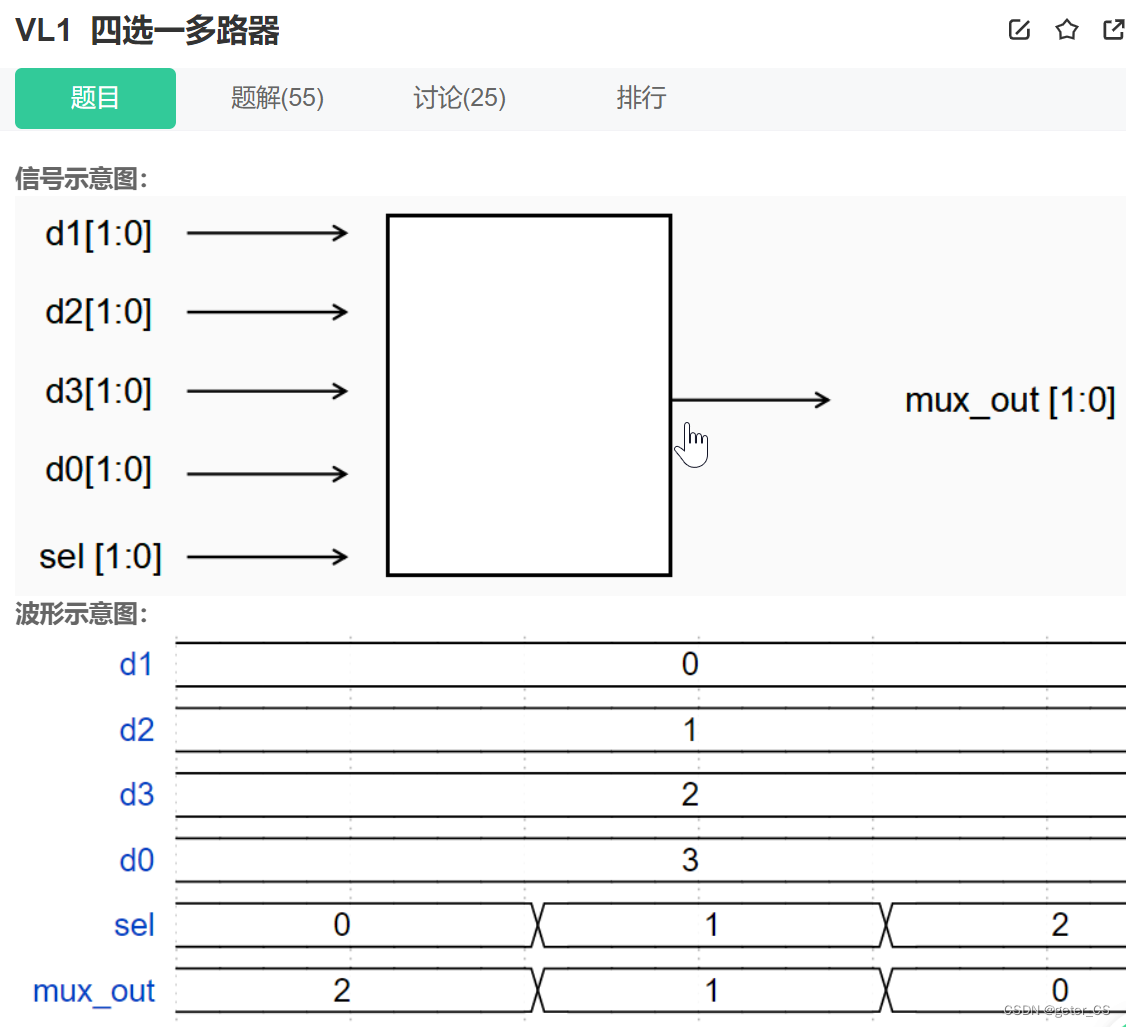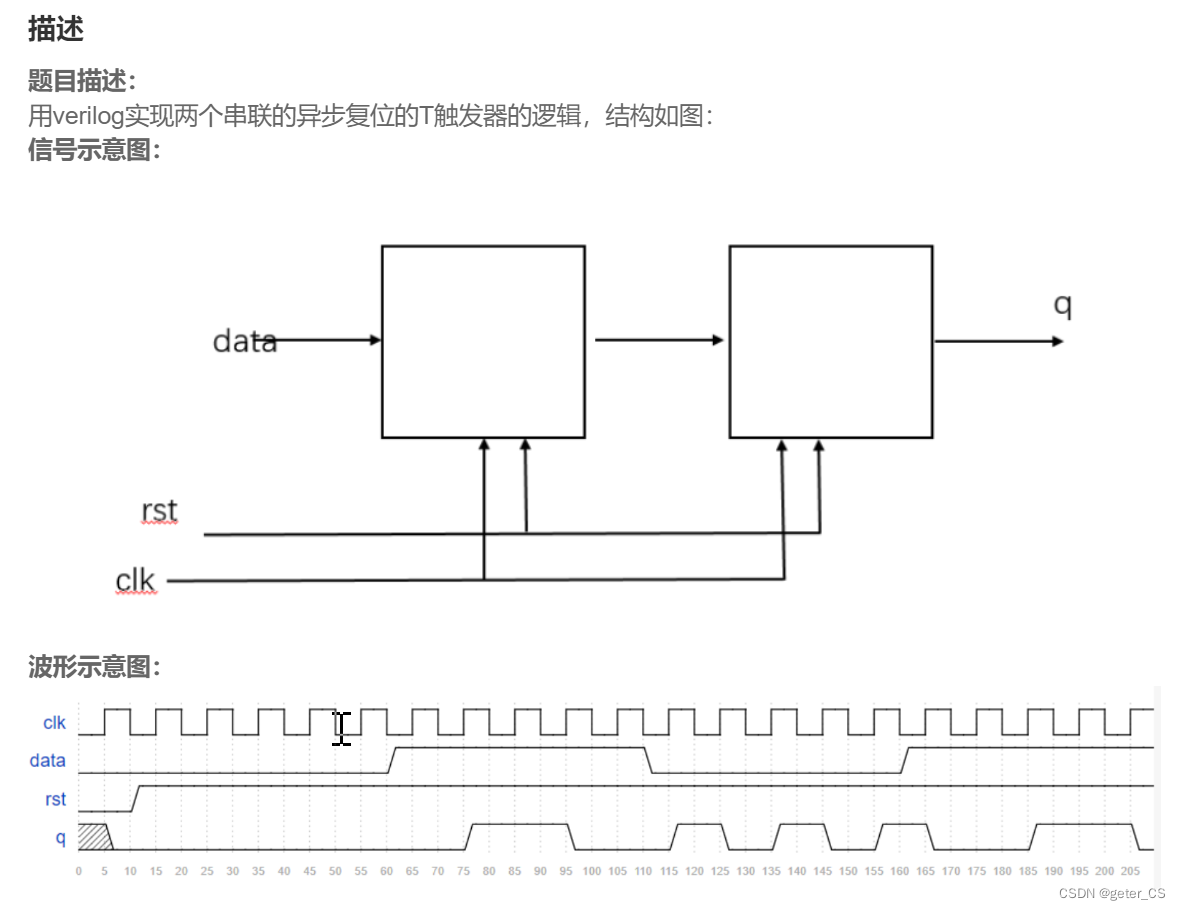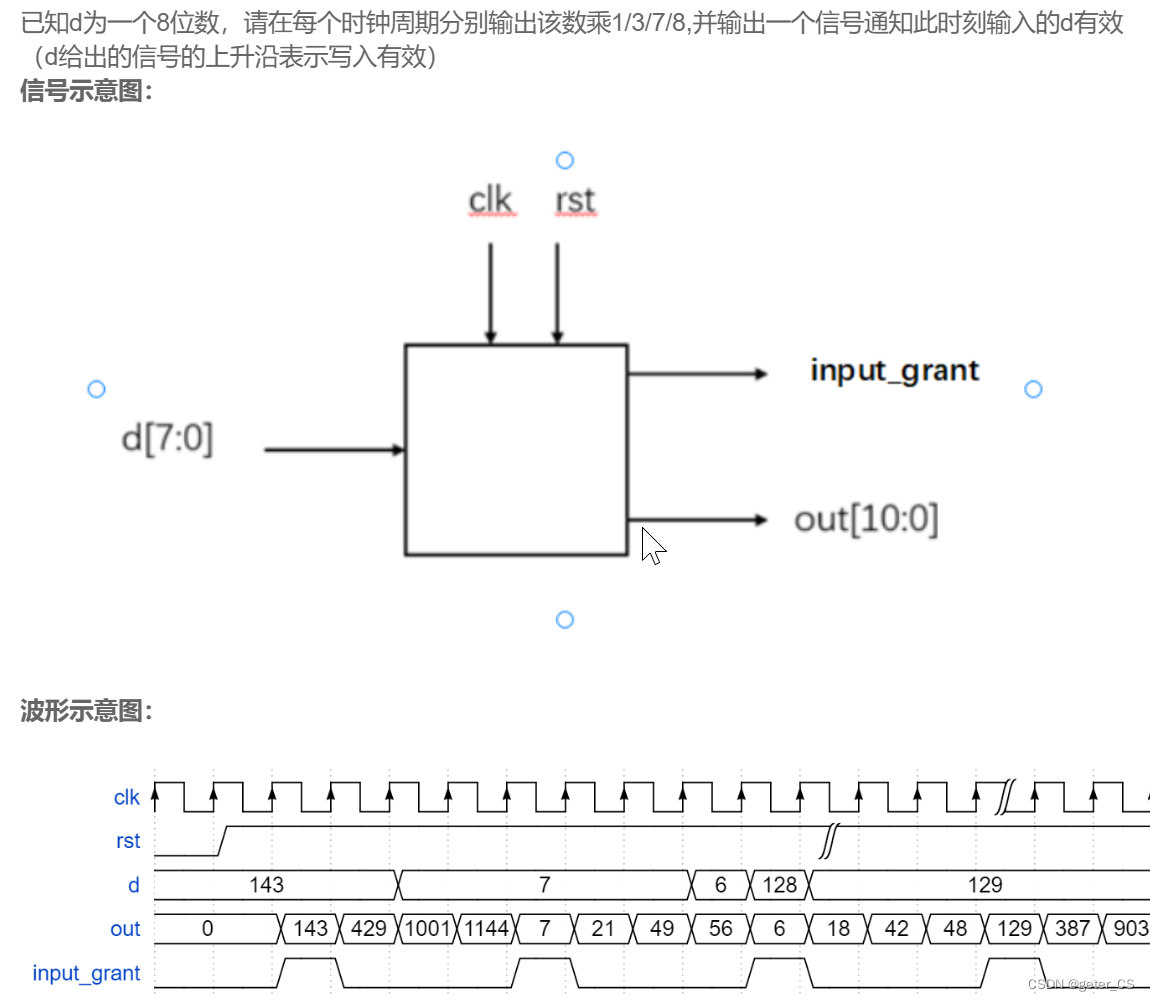VL3奇偶校验

`timescale 1ns/1ns
module odd_sel(
input [31:0] bus,
input sel,
output check
);
//*************code***********//
assign check=sel?^bus:~^bus;
//*************code***********//
endmoduleVL1 四选一多路器

`timescale 1ns/1ns
module mux4_1(
input [1:0]d1,d2,d3,d0,
input [1:0]sel,
output[1:0]mux_out
);
//*************code***********//
assign mux_out=sel[0]?(sel[1]?3:1):(sel[1]?0:2);
//assign mux_out=sel==0?2:(sel==1?1:(sel==2?0:3));
//*************code***********//
endmoduleVL2 异步复位的串联T触发器
T触发器是在数字电路中,凡在CP时钟脉冲控制下,根据输入信号T取值的不同,具有保持和翻转功能的触发器,即当T=0时能保持状态不变,当T=1时一定翻转的电路。--百度百科

`timescale 1ns/1ns
module Tff_2 (
input wire data, clk, rst,
output reg q
);
//*************code***********//
reg q0;
always@(posedge clk or negedge rst) begin
if(!rst) begin
q0<=0;
end else begin
case(data)
'b1:q0<=~q0;
default: q0<=q0;
endcase
end
end
always@(posedge clk or negedge rst) begin
if(!rst) begin
q<=0;
end else begin
case(q0)
'b1:q<=~q;
default: q<=q;
endcase
end
end
//*************code***********//
endmodule真值表:
data q0 q0next q0next q q_next
0 0 0 0 0 0
0 1 1 0 1 1
1 0 1 1 0 1
1 1 0 1 1 0
q0_next<=data^q0
q_next<=data^q1
`timescale 1ns/1ns
module Tff_2 (
input wire data, clk, rst,
output reg q
);
//*************code***********//
reg q0;
always@(posedge clk or negedge rst) begin
if(!rst) begin
q0<=0;
q<=0;
end else begin
q0<=data^q0;
q<=q0^q;
end
end
//*************code***********//
endmoduleVL4 移位运算与乘法

`timescale 1ns/1ns
module multi_sel(
input [7:0]d ,
input clk,
input rst,
output reg input_grant,
output reg [10:0]out
);
//*************code***********//
reg [1:0]count;
reg [7:0] reg_n;
always@(posedge clk or negedge rst) begin
if(!rst) begin
out<=0;
input_grant<=0;
count<=0;
reg_n<=0;
end else begin
if(count==0) begin
out<=d*1;
reg_n<=d;
input_grant<=1;
count<=count+1;
end else if(count==1) begin
out<=reg_n*3;
input_grant<=0;
count<=count+1;
end else if(count==2) begin
out<=reg_n*7;
input_grant<=0;
count<=count+1;
end else begin
out<=reg_n*8;
input_grant<=0;
count<=0;
end
end
end
//*************code***********//
endmodule`timescale 1ns/1ns
module multi_sel(
input [7:0]d ,
input clk,
input rst,
output reg input_grant,
output reg [10:0]out
);
//*************code***********//
reg [1:0] CS,NS;
reg [7:0] reg_n;
//state change
always@(posedge clk or negedge rst) begin
if(!rst) begin
CS<='b00;
NS<='b00;
end else begin
CS<=NS;
end
end
//next state
always @(CS or NS)begin
case(CS)
'b00:NS<='b01;
'b01:NS<='b10;
'b10:NS<='b11;
default:NS<='b00;
endcase
end
//output
always @(posedge clk or negedge rst) begin
if(!rst) begin
out<=0;
input_grant<=0;
end else begin
case(CS)
'b00:begin
out<=d;
input_grant<=1;
reg_n<=d;
end
'b01:begin
out<=reg_n*3;
input_grant<=0;
end
'b10:begin
out<=reg_n*7;
input_grant<=0;
end
default:begin
out<=reg_n*8;
input_grant<=0;
end
endcase
end
end
//********





















 367
367











 被折叠的 条评论
为什么被折叠?
被折叠的 条评论
为什么被折叠?








